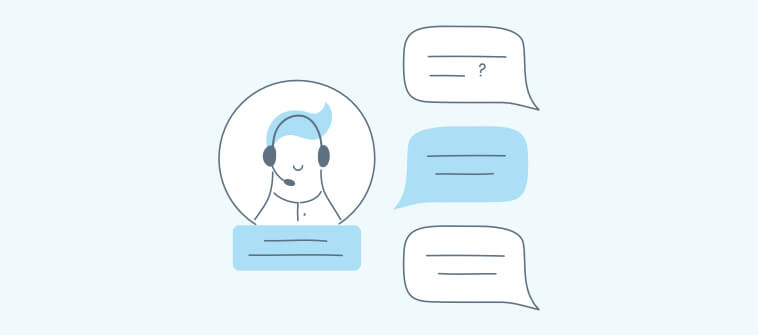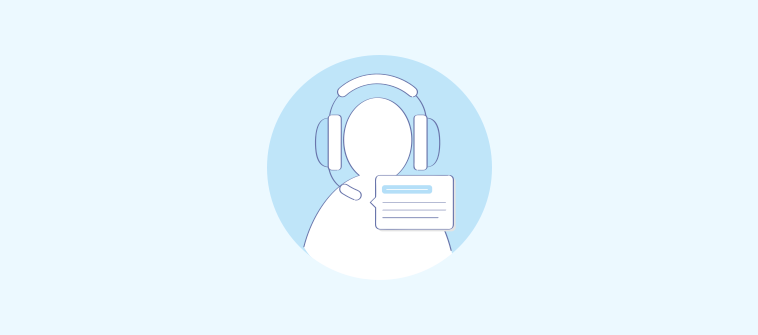Whether you are a company of 5 or 5,000, you need new customers to survive and thrive. But with competitors investing millions of dollars on their marketing efforts, how do you acquire customers?
More money doesn’t necessarily mean more customers. Your customer acquisition strategy should be centered around educating new customers with relevant content, enhancing engagement on social media, and launching promotional campaigns that are non-obtrusive in nature.
Customer acquisition sits at the core of any sales or marketing team’s efforts. Finding prospects who may be interested in what you sell is crucial to building and sustaining a business.
If you are new to this concept, this customer acquisition guide will answer all your questions. From finding the right customer acquisition channels for your business to calculating CAC, this blog has all the information you need.
Let’s start with the basics first. Here we go!
What Is Customer Acquisition?
Customer acquisition refers to the process of using multiple strategies to gain new customers or clients for a business. It is the process of using different marketing strategies to target potential customers, convince them to purchase a product or service, and ultimately convert them into loyal customers. This involves various marketing strategies and techniques, such as advertising, email marketing, social media marketing, search engine optimization (SEO), content marketing, and more.
Customer acquisition is a critical aspect of any business as it directly impacts revenue growth and profitability. Acquiring new customers can be more expensive than retaining existing ones, which is why businesses need to implement effective customer acquisition strategies to ensure the growth and sustainability of their business.
The 6-step Customer Acquisition Process
The 6-step customer acquisition process is a framework businesses can use to acquire new customers systematically. Here are the steps:
1. Define Your Target Audience: Identify the characteristics of your ideal customer, such as demographics, interests, and behaviors.
2. Reach Your Audience: Determine the best channels to reach your target audience, such as social media, email marketing, or advertising.
3. Capture Leads: Encourage potential customers to provide their contact information by offering something of value, such as a free trial, a discount, or an ebook.
4. Nurture Leads: Build relationships with your leads by providing them with relevant and helpful content and engaging with them through various channels.
5. Convert Leads: Use targeted messaging and offers to encourage your leads to become paying customers.
6. Measure & Optimize: Track and analyze your customer acquisition metrics, such as conversion rates and lifetime value, and make data-driven decisions to improve your customer acquisition strategy.
By following this process, businesses can attract and convert new customers while building lasting relationships with them.
Customer Acquisition Marketing Methods and Channels
Businesses use various methods to grab the attention of potential customers and convert them into buying customers.
Here are some popular acquisition marketing channels used by successful marketers:
1. Search Engine Marketing (SEM)
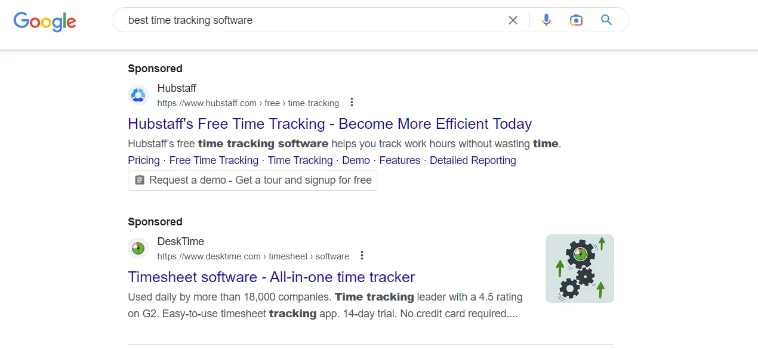
SEM involves paid search ads on search engines like Google or Bing. These ads appear when users search for specific keywords related to a business’s products or services.
Social media platforms like Facebook, Instagram, LinkedIn, and LinkedIn Sales Navigator allow businesses to advertise to specific target audiences based on demographic, location, interests, and behaviors.
2. Content Marketing
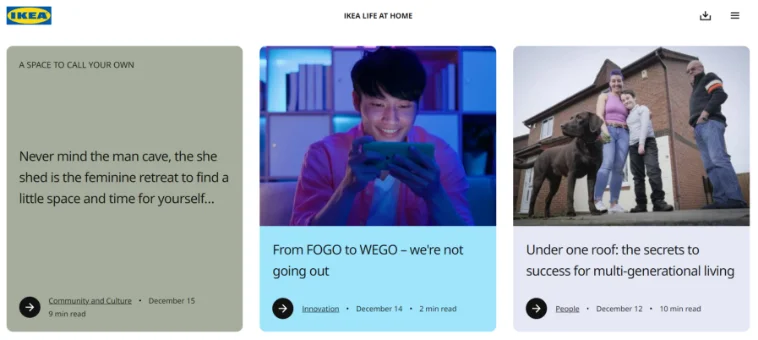
Content marketing involves creating and distributing valuable, relevant, and consistent content to attract and retain a clearly defined audience. This can include blog posts, videos, podcasts, social media posts, and more. With the help of the right content, you can educate your audience and help them make better purchasing decisions.
3. Email Marketing

Email marketing involves sending promotional emails or newsletters to a list of subscribers who have opted in to receive them. These emails can be used to promote products, services, upcoming sales, or special offers. Marketing emails are shared with customers and prospects periodically – preferably once a week or twice a month.
4. Influencer Marketing
Influencer marketing involves partnering with social media influencers or celebrities to promote a business’s products or services to its followers. Influencers are chosen by brands because of their large following on the web and social media channels. This customer acquisition method might not give you overnight success, but it will surely help you enhance brand recognition.
5. Referral Marketing
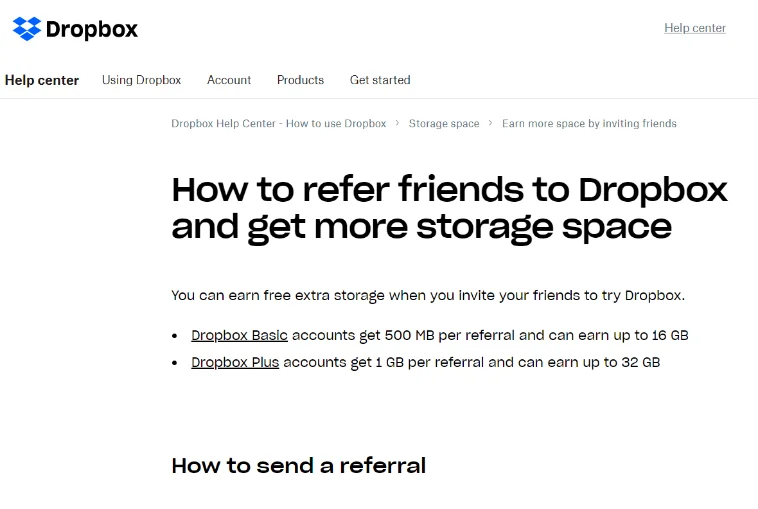
Referral marketing involves incentivizing existing customers to refer their friends and family to a business. Customers are often given lucrative incentives for recommending others to your business, such as discounts, rewards, freebies, or exclusive offers. In simple terms, you turn your existing customers into brand advocates and encourage them to market your brand.
6. Affiliate Marketing
Affiliate marketing involves partnering with other businesses or individuals to promote a business’s products or services. These affiliates earn a commission on any sales they generate. Affiliate marketing creates a win-win situation for both parties. On the one hand, the business can acquire new customers and boost sales. On the other hand, the affiliate can receive timely commissions and make easy money.
How to Calculate Customer Acquisition Cost (CAC)
Customer Acquisition Cost (CAC) is a critical metric that measures the cost of acquiring a new customer. It is important for businesses to calculate CAC to understand their marketing and sales expenses and evaluate the effectiveness of their strategies.
Here are the steps to calculate CAC:
- Determine the time period: Decide on the time period for which you want to calculate CAC, such as a month or a year.
- Calculate total marketing and sales expenses: Add up all the costs associated with marketing and sales activities, including salaries, advertising expenses, commissions, bonuses, and any other expenses.
- Count the number of new customers: Determine the number of new customers acquired during the time period.
- Calculate CAC: Divide the total marketing and sales expenses by the number of new customers acquired during the time period.
The formula for calculating CAC is:
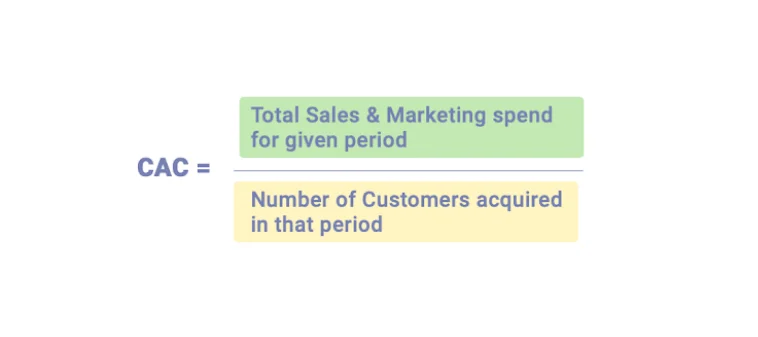
Customer Acquisition Cost or CAC = Total marketing and sales expenses in a time period / Number of new customers acquired in that period
Example of CAC Calculation:
For example, let’s imagine an online fashion store spends $22,000 on marketing and sales (running social media advertisements, video marketing, etc.) in the month of March. If the company acquires 100 new customers during the same period, the CAC would be:
CAC = $22,000 / 100 = $220
As you can see, the business spent an average of $220 to acquire each new customer during that month.
FREE. All Features. FOREVER!
Try our Forever FREE account with all premium features!
What Is the Average Customer Acquisition Cost?
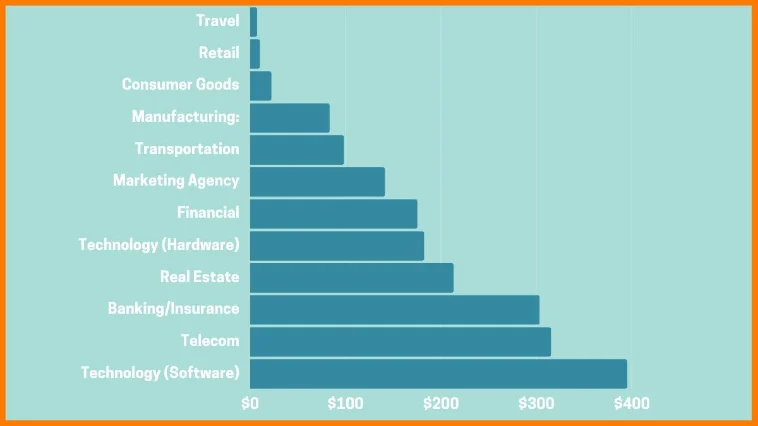
The average customer acquisition costs vary from one industry to another. The difference in costs can be attributed to multiple factors, such as the average spend per customer, purchase frequency, customer lifetime value, and more.
Travel companies, on average, spend $7 to acquire a new customer. Followed by Retail companies that spend $10/new customer. However, the numbers can seem to be a little scary for banking ($303) and software ($395) companies.
What is a good customer acquisition cost?
To know if your CAC is ideal, you need to calculate your customer lifetime value (LTV) and compare the two. LTV helps you measure the total revenue generated from an average customer’s entire relationship with your brand. Ideally, the LTC to CAC ratio should be 3:1. This means that your business is making 3x more revenue from a customer than what it is spending to acquire them.
If your LTV/CAC is less than 3, it means that your business is spending too much on marketing and sales expenses. If this is continued for a long time, your business might not be able to sustain itself or remain profitable.
Tips to Improve Your Customer Acquisition Strategy
If you still need to finalize your customer acquisition plan, we have some good news for you! Here are some proven tips and strategies that will give you the right dose of inspiration.
1. Define Your Target Audience
As a first step, every business needs to identify and define who its target audience is. For example, if you are a furniture company, you may wish to cater to a specific demographic, such as people in the age group of 20-50.
Knowing your ideal customer is critical for a successful customer acquisition strategy. Develop a detailed profile of your target audience based on their demographics, interests, behavior, and pain points. This will help you tailor your messaging and marketing efforts to resonate with your audience, increasing the likelihood of conversion.
2. Offer Value Through Content
Businesses are rapidly curating and publishing content to keep prospects and customers engaged. Your content marketing strategies can include multiple formats, such as video tutorials, blogs, help center articles, infographics, newsletters, social media posts, etc.
Develop content that provides solutions to customer problems, educates them about your product or industry, and entertains them. This will help establish your brand as an authority in your industry and build trust with your potential customers.
3. Engage Prospects on Social Media
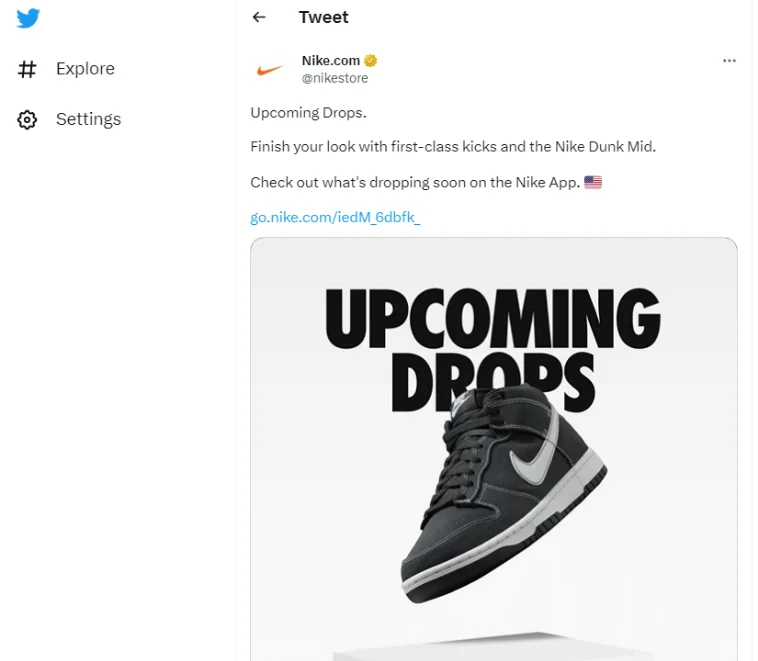
Social media is no longer just a platform to connect with your friends, colleagues, and family members. Most businesses are using the leading social media platforms, such as Facebook, Instagram, Twitter, LinkedIn, etc., to share delightful posts and engage prospects.
According to a study, the total spend on social media advertising is projected to reach $268 billion in 2023. Through social media ads, you can reach out to your target audience and promote your story – how your brand can solve their specific problems. Identify the social media channels your target audience is most active on and create a customer experience strategy that involves engaging content, community building, and paid advertising.
4. Manage All Communications in One Place
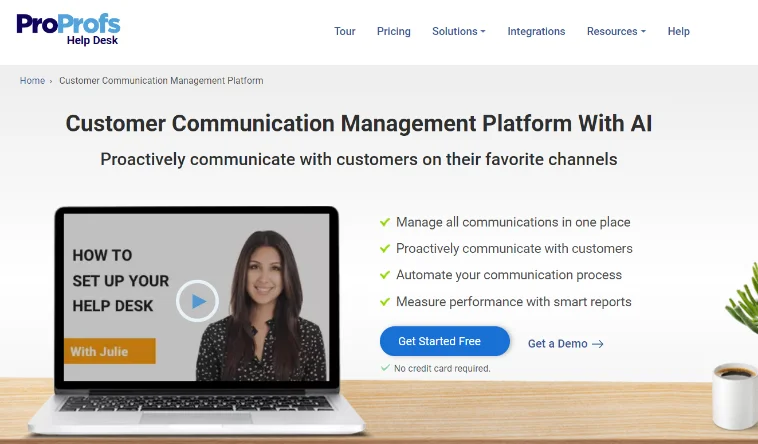
As soon as you market your products or services, you will receive inquiries from your prospective customers. “How much does the product cost? Where can I buy it? What are your return policies?”
With customer communication management software, you can manage all customer communications in one place. Whether prospects share their inquiries via email or fill out a website inquiry form, your team can access and respond to all messages in one place.
With the shared inbox feature, you can manage multiple team inboxes (info@company, inquiry@company, sales@company, etc.) under one roof. In addition, it’s important to prioritize urgent messages that can be game-changers for your business. For example, if a big client shares an inquiry, you can prioritize this message, share an immediate response, and schedule a meeting quickly.
5. Optimize Your Website

Your website is often the first impression a potential customer has of your brand. Whether a prospect wishes to contact your sales team or browse your online products, the website can make or break their experience.
Make sure your website is visually appealing, easy to navigate, and optimized for search engines. This will improve your website’s visibility, attract more traffic, and increase the likelihood of conversion.
6. Measure and Analyze Your Customer Acquisition Efforts
How do you know if your team is on the right track to achieving goals? Are you able to successfully convert prospects into customers? There is only one way to find out – reports and analytics.
Measuring and analyzing your results is critical to improving your customer acquisition process. Use data analytics tools to track your website traffic, conversion rates, and customer engagement. You can target key marketing metrics such as total conversions, conversion rate, cost per acquisition, conversion rate by channel, and others, based on your unique objectives.
How Is Customer Acquisition Different From Customer Retention?
Customer acquisition and customer retention are two different strategies that companies use to manage their customer base. While on the one hand, customer acquisition is the process of acquiring new customers who have not previously purchased from the company. On the other hand, customer retention is the process of keeping existing customers and encouraging them to continue doing business with the company.
Here are some key differences between customer acquisition and customer retention:
- Focus: Customer acquisition focuses on reaching out to new customers and convincing them to purchase from the company. Customer retention, on the other hand, focuses on strengthening customer relations by maintaining a relationship with existing customers and keeping them engaged.
- Cost: Customer acquisition is generally more expensive than customer retention. This is because acquiring new customers typically requires more marketing and sales efforts. Customer retention is more cost-effective because it is easier to sell to existing customers who are already familiar with the company.
- Lifetime value: Acquiring a new customer is only the first step in a long-term relationship. The goal of customer retention is to increase the lifetime value of each customer by keeping them engaged and loyal to the company. This is important because a loyal customer is more likely to make repeat purchases and refer others to the company.
- Metrics: Customer acquisition and customer retention are measured differently. Customer acquisition is typically measured by the cost per acquisition (CPA), which is the cost of acquiring a new customer. Customer retention is measured by the retention rate, which is the percentage of customers who continue to do business with the company over a period of time.
In summary, customer acquisition and customer retention are two different strategies that companies use to manage their customer base.
Customer Acquisition is Only Half the Battle Won ….
Customer acquisition is a crucial aspect of any business’s growth strategy. The process of acquiring new customers involves identifying target audiences, understanding their needs and preferences, and reaching out to them through various online or offline marketing channels.
While it’s good to focus on customer acquisition, it’s essential not to lose sight of something equally important – customer retention. After all, depending on your industry, acquiring a customer can cost you 5 to 7 times more than retaining an existing customer.
If you wish to manage all communications from prospects and existing customers under one roof, we have the right solution for you. ProProfs Help Desk allows you to assist and engage your audience via email, live chat, help center, web forms, and other channels. Moreover, you can create sales and lead generation chatbots to never miss a website visitor again.
 Tips
Tips
We’d love to hear your tips & suggestions on this article!
FREE. All Features. FOREVER!
Try our Forever FREE account with all premium features!

 We'd love your feedback!
We'd love your feedback! Thanks for your feedback!
Thanks for your feedback!




